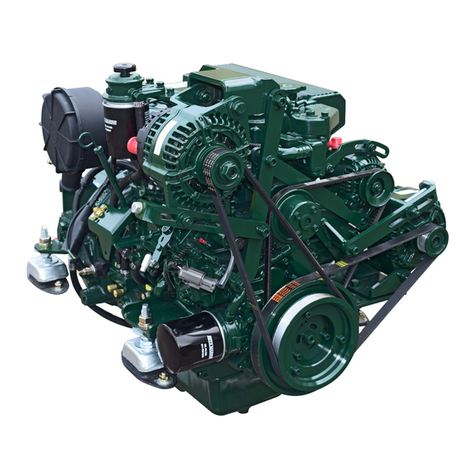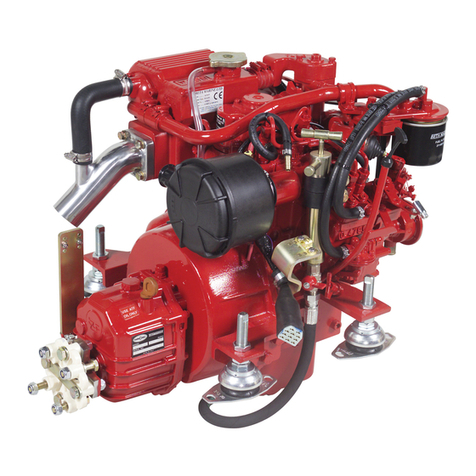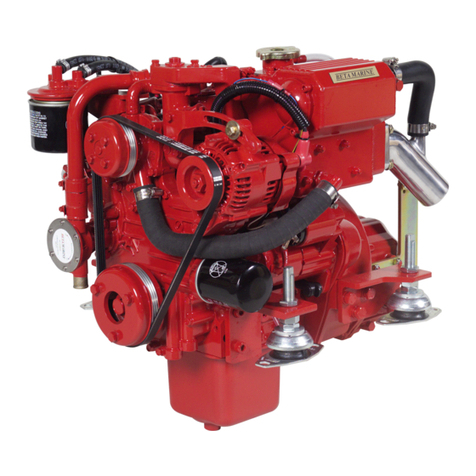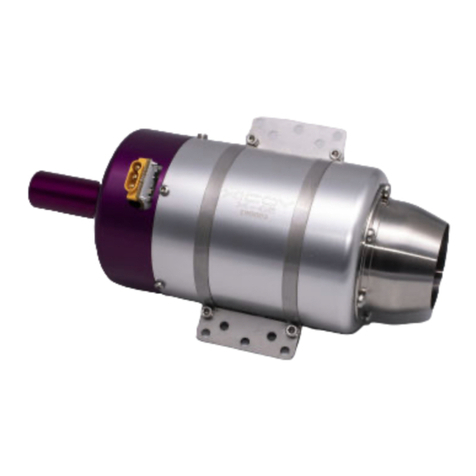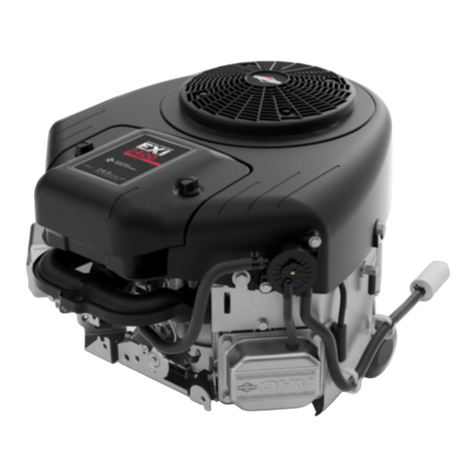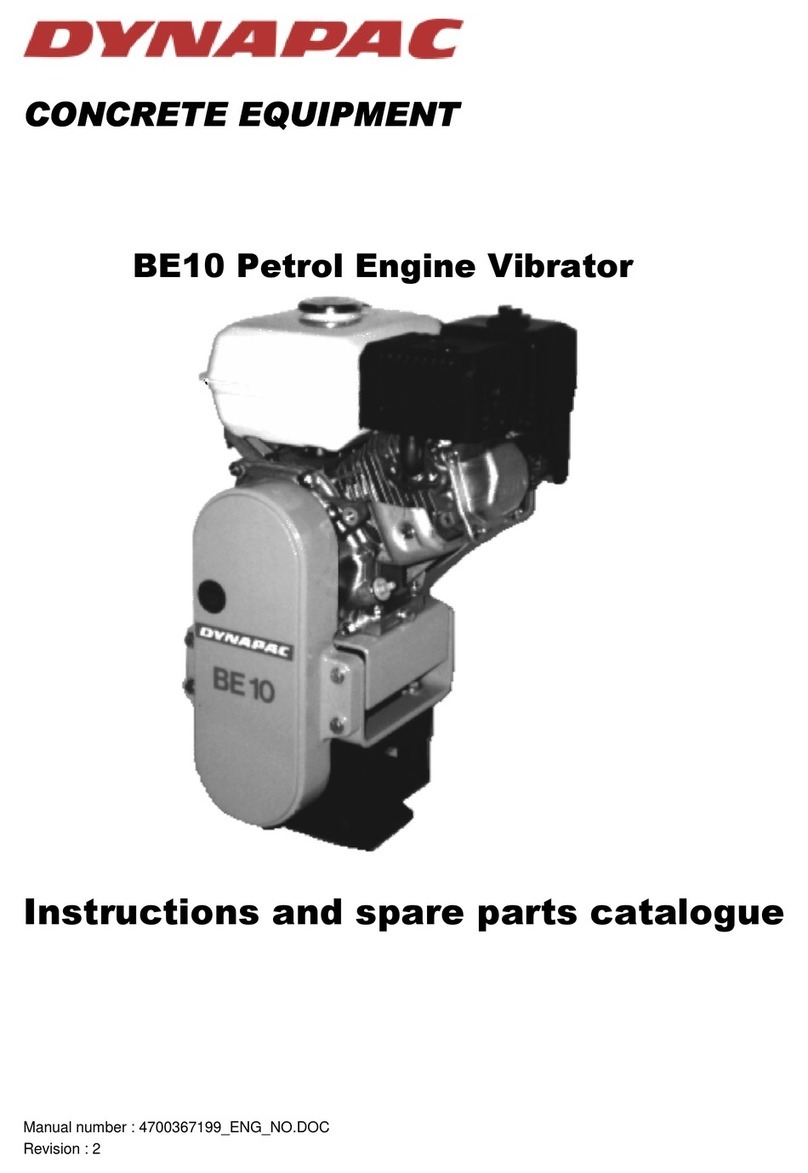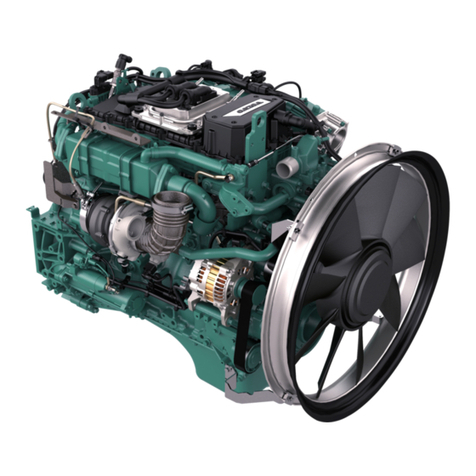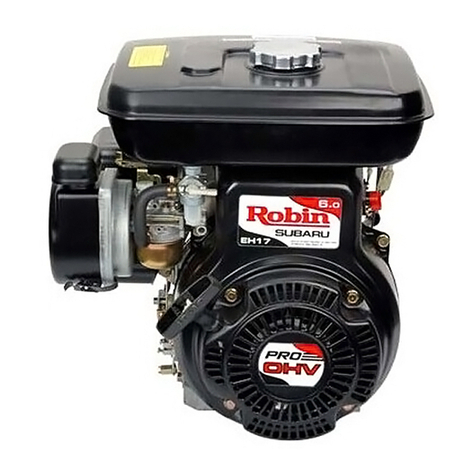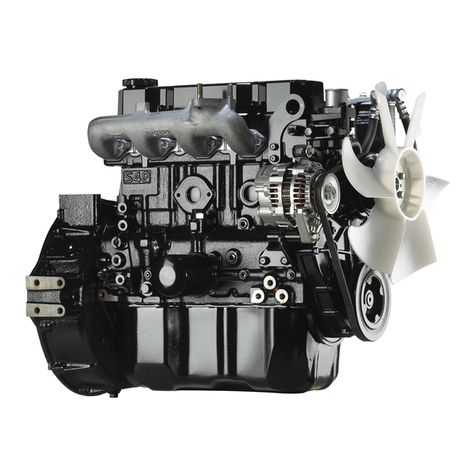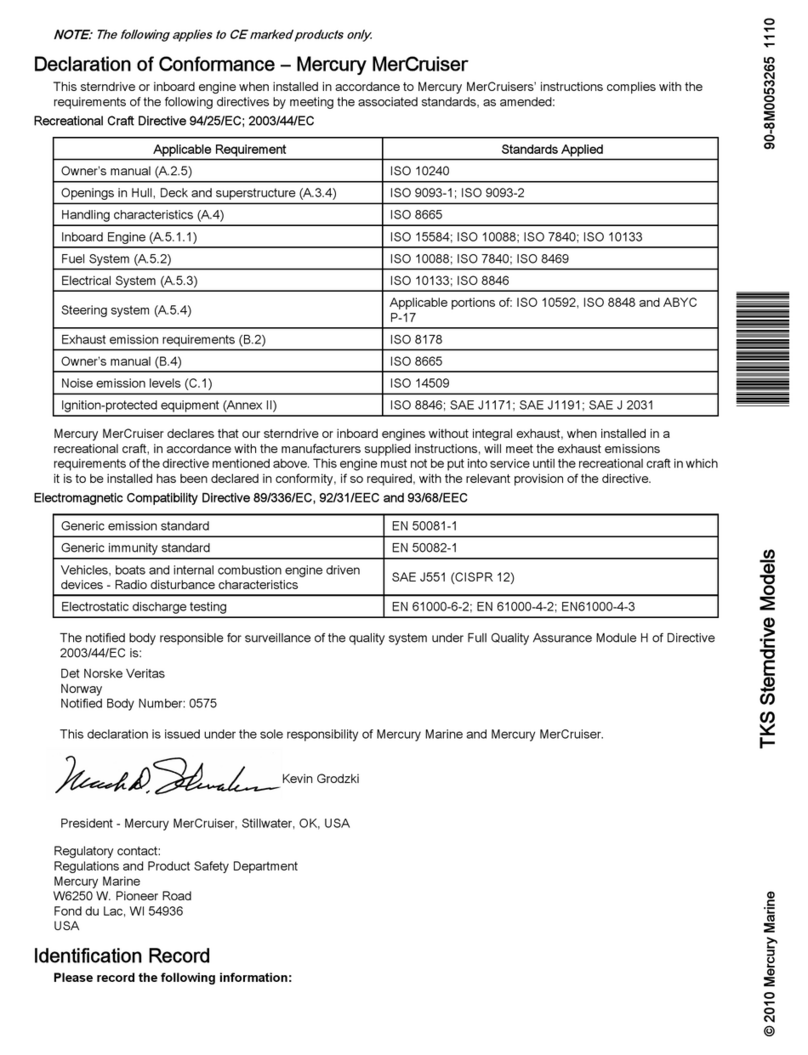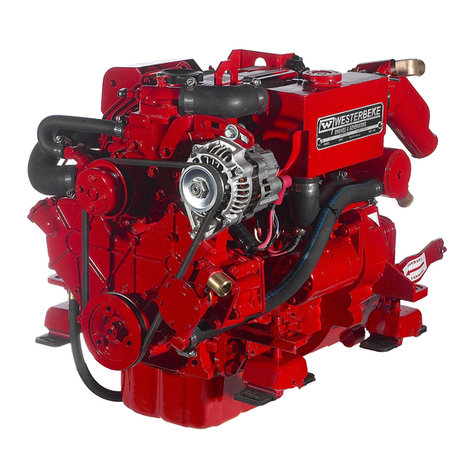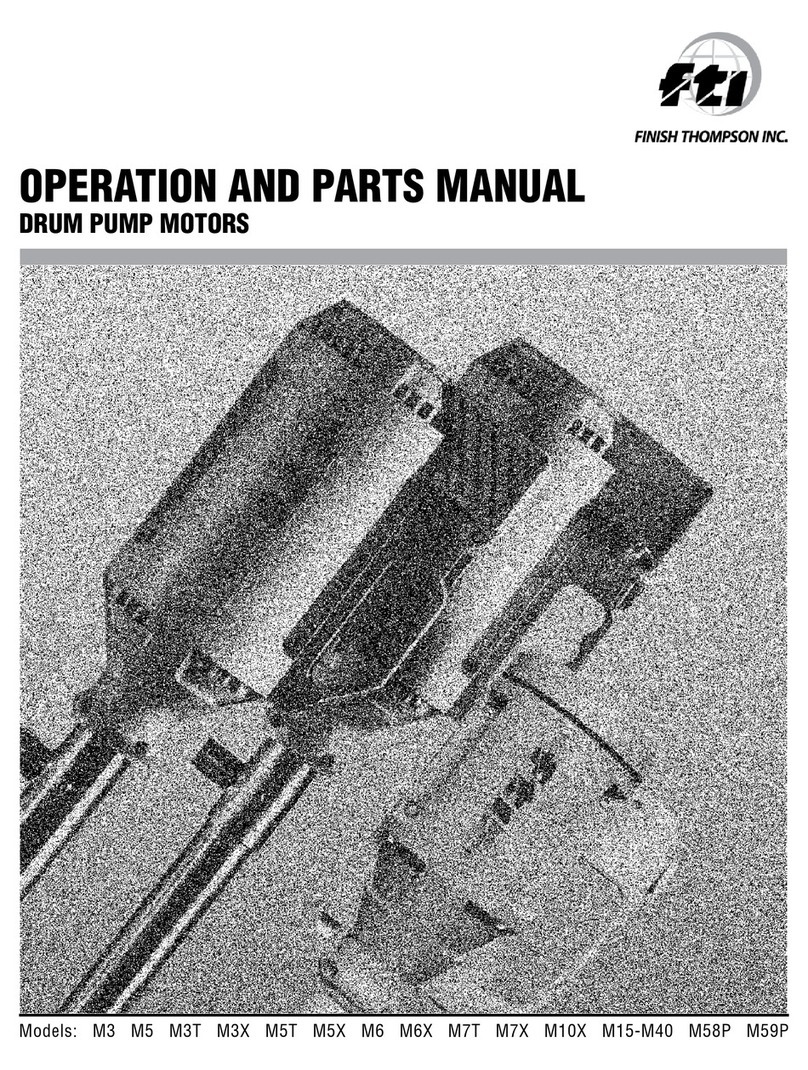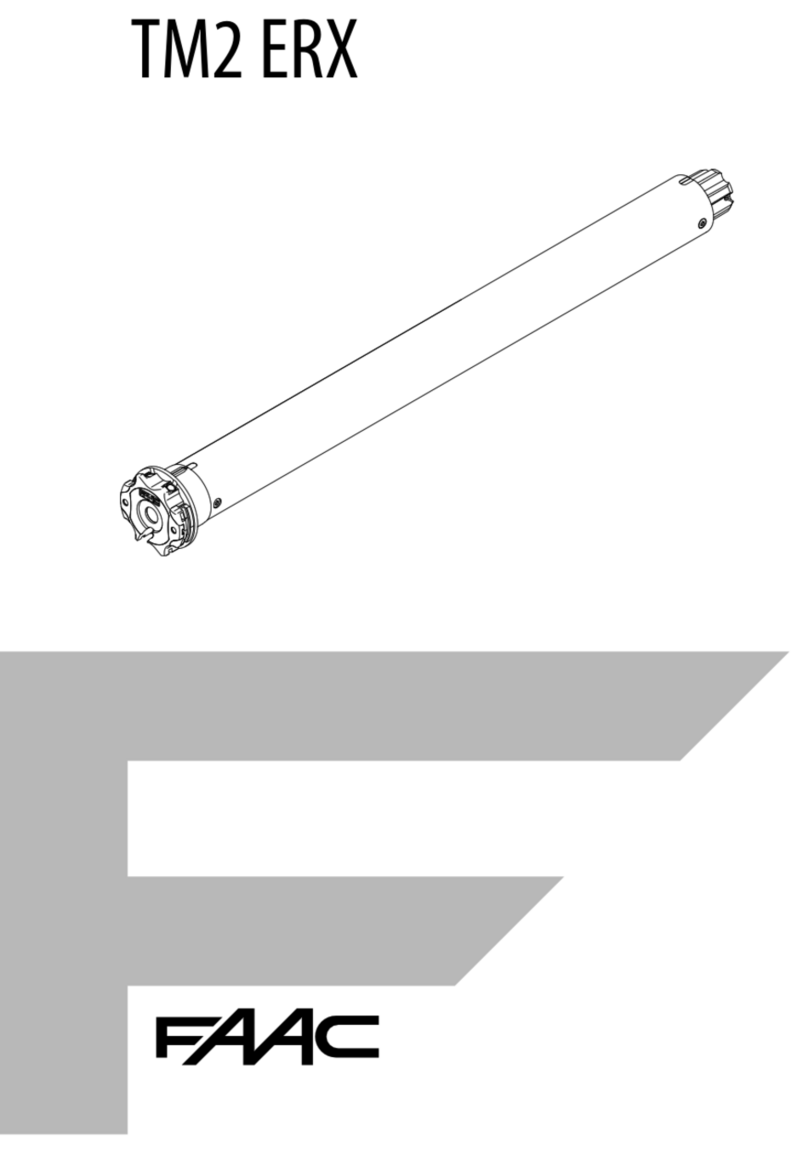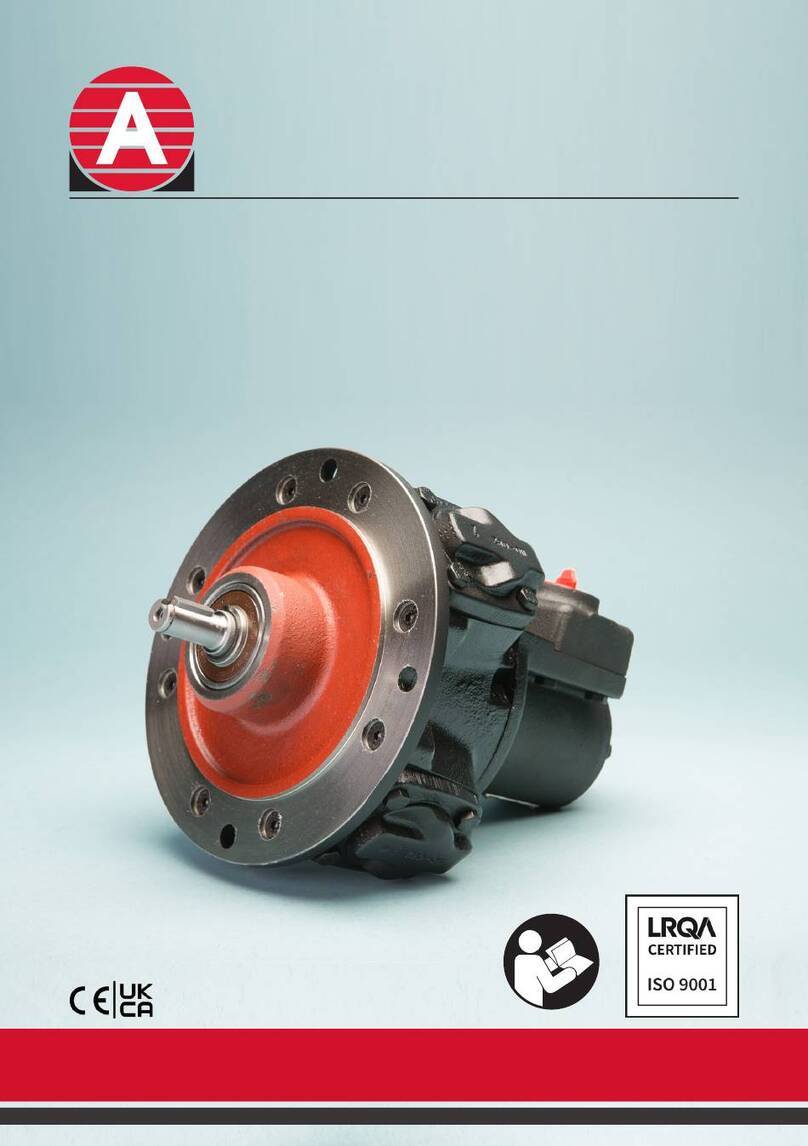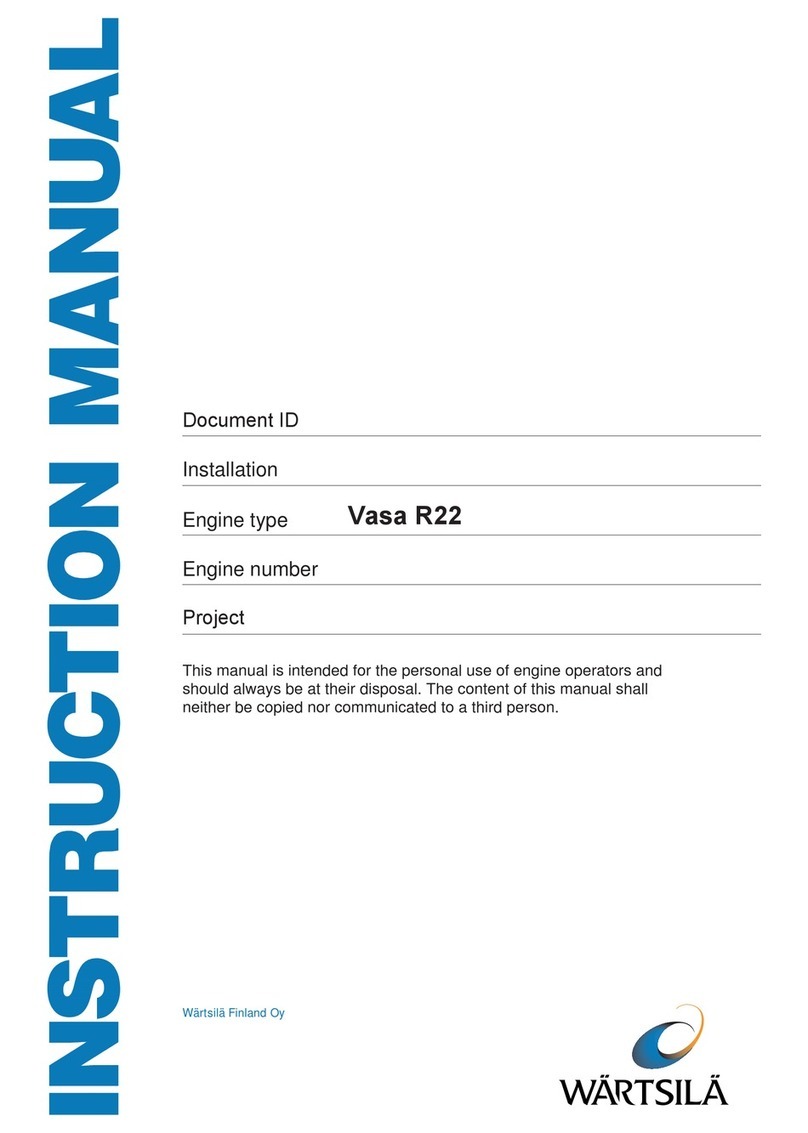10
Electrical Installations
Beta Marine has 6 control panels: A, AB, ABV, ABVW B or C.
The Beta 43, Beta 50 and Beta 60 use the ABV, ABVW, B
and C control panels.
The engine harness is common to all.
1. These control panels must not be installed where sea
water spray can get at them. A suitable flap or cover
must be fitted.
2. Control Panels must be fitted in a location where the
helmsman can either see or hear the alarm system.
3. For standard wiring diagrams see pages 39 to 63.
4. Our standard wiring harness has a 3 metre loom.
As an optional extra, Beta can provide various lengths of
extension looms for runs of over 3m, but this kit includes
a start relay to overcome the voltage drop (See drawing
300-58520).
5. All electrical equipment must be protected from sea water.
Sea water or rust in the starter will invalidate the
warranty. Care must be taken when pushing the two
halves of the plug together to ensure that individual pins
do not fall out.
To prevent corrosion and assist in assembly we
recommend that the plug is packed with petroleum jelly
(Vaseline) and then carefully pushed together. The plastic
boots should cover both halves and overlap. A cable tie is
then put around to hold the two halves in position and
help prevent any ingress of water.
6. All cables must be adequately clipped and protected from
abrasion.
7. Electrical systems shall be designed and installed so as to
ensure proper operation of the craft under normal
conditions of use and shall be such as to minimise risk of
fire and electric shock.
8. Attention shall be paid to the provision of overload and
short circuit protection of all circuits; except engine
starting circuits, supplied from batteries.
9. Ventilation shall be provided to prevent the accumulation
of gases, which might be emitted from batteries. Batteries
shall be firmly secured and protected from ingress of
water.
Typical Starter Motor Ratings
Starters used in Kobuta engines have the following
standard capacities:
Engine Starter Capacity (kW)
Less than 700cc 0.8 - 1.0
700 to 1,500cc 1.0 - 1.4
1,500 to 3,000cc 1.4 - 2.0
Over 3,000cc 2.0 - 2.5
Suggested Minimum Engine Starter
Battery Size
Engine Typical Battery Typical C.C.A
Capacity (AH) Cold Cranking
at a 20hr Rate Amperage
Beta 10, Beta 14, 35 - 50 AH 350 - 400
Beta 16, Beta 20
Beta 25, Beta 28,
Beta 35, Beta 38, 65 - 75 AH 450 - 540
Beta 43
Beta 50, Beta 62 100 - 120 AH 580 - 670
Beta 75, Beta 90 150 - 180 AH 1050 - 1200
Keyswitch Terminations
The standard panel keyswitch can be used to tap off a
switched positive ignition feed to power additional gauges. In
this way these gauges will only be live whilst the engine is
running, the engine is starting or the heaters are being used.
For silver keyswitches, the terminal to achieve this ignition
switched positive is marked ‘AC’. For black keyswitches, the
terminal to achieve this ignition switched positive is marked
‘15/54’. For panels without any keyswitch, gauges can be
driven from the 1 mm2brown wire which terminates at
11 way connector terminal 4. This is a lower power switched
positive, any additional power required from this connection
must be feed through a relay, as noted below.
Note: these keyswitch terminals are rated at 10 amps
maximum, since they are already utilised for panel and
alternator feeds Beta Marine recommend any additional
requirements from these terminals must be fed through a
relay. This relay should then be connected to it’s own fused
positive supply directly from the engine battery. Beta drawing
202-06421 illustrating the wiring of a typical electric fuel lift
pump with ignition switched relay can be supplied upon
request.





















